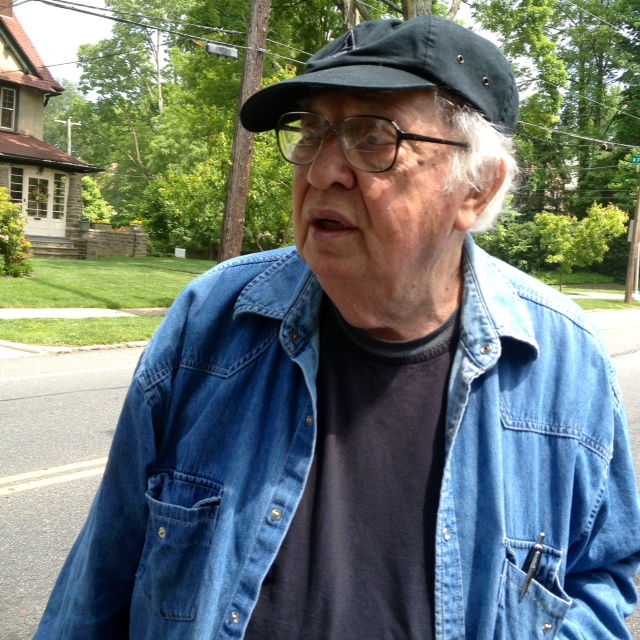
I’d be lying if I told you that the first sounds I hear when I take Wally out in the morning are bird sounds. Instead, it’s the soft roll of tires on one of the streets that crisscross my neighborhood or urban beats booming louder than seems possible behind the windows of a passing car. But especially when it’s early enough, those sound-trails tend to fade into a quiet distance before too long, and the next things I usually hear are the local birds.
This time of year it can be the urgent squawking of Canadian geese, formed in a vee directly above us, after leaving the reservoir nearby and heading north by north-east in their annual migration. Or the tittering sparrows and wrens. But it can also be our talkative crows. They live in social groupings that have been called “murders” for as long as anyone can remember. While many explanations have been given, it seems that their name originated in folklore when many animal groups were described for dramatic effect by their characteristics, like an ostentation of peacocks, a parliament of owls, a knot of frogs, or a skulk of foxes.
Crows are highly social, mate for life, protect one another (including unfamiliar crows that are looking for help), and vocalize by using upwards of 250 different calls. This last character trait may actually go some distance towards explaining why crows are called a “murder” when they start chattering. Informal English has always accused the lower classes of “murdering” the common tongue.
Until a huge tree fell from an old neighbor’s yard and onto the new one’s next door, the resident murder would roost in its canopy and converse for hours. Wally would bark back at them when he was out and I’d also say “hello” if I thought of it. I’ve come to appreciate that our crows know exactly who we are and that we’re in some kind of conversation with them too.
Since they’ve been particularly noisy this week, their chatter made me take a second look at a book I read and reviewed here this time last year: Colum McCann’s Apeirogon, a word that means an object or, in this instance a story. with an infinite number of sides. McCann’s book is about the endless conversations, memories and illuminations that characterize the Israeli-Palestinian conflict and, in particular, how those relevancies and asides add dimension to a dialogue between two real-life fathers (one Israeli, one Palestinian) who has each lost a daughter to the murderous violence and struggles to transcend his loss. In the jumble of images, fables and impressions that he assembles, McCann continuously returns to the birds who also live in this elemental place, or pass through it on their annual migrations. “Our” crows made me want to re-revisit their stories-within-stories.
For example, this is the third of “the thousand-and-one” (or endless) digressions and reflections that make up Apeirogon:
Five hundred million birds arc the sky over the hills of Beit Jala every year. They move by ancient ancestry: hoopoes, thrushes, flycatchers, warblers, cuckoos, starlings, shrikes, ruffs, northern wheatears, plovers, sunbirds, swifts, sparrows, nightjars, owls, gulls, hawks, eagles, kites, cranes, buzzards, sandpipers, pelicans, flamingos, storks, pied bushchats, griffon vultures, European rollers, Arabian babblers, bee-eaters, turtledoves, whitethroats, yellow wagtails, blackcaps, red-throated pipits, little bitterns.
It is the world’s second busiest migratory superhighway: at least four hundred different species of birds torrent through, riding different levels of sky. Long vees of honking intent. Sole travelers skimming low over the grass.
Every year a new landscape appears underneath: Israeli settlements, Palestinian apartment blocks, rooftop gardens, barracks, barriers, by-pass roads.
Some of the birds migrate at night to avoid predators, flying in their sidereal patterns, elliptic with speed, devouring their own muscles and intestines in flight. Others travel during the day to take advantage of the thermals rising from below, the warm wind lifting their wings so they can coast.
At times whole flocks block out the sun and daub shadows across Beit Jala: the fields, the steep terraces, the olive groves on the outskirts of town.
Lie down in the vineyard in the Cremian monastery at any time of day and you can see the birds overhead, traveling in their talkative lanes.
They land on trees, telegraph poles, electricity cables, water towers, even the rim of the Wall, where they are a sometime target for the young stone throwers.
You see, the birds also get caught up in the violence that inflicts this corner of the Levant, one of the birthplaces of the human world. But at the same time, they give wing to the aspirations that can also emerge from the grief of many of those who live there today.

Two bird masks that I bought, several years ago, from a couple of backpackers who had set up shop in an Upper-West Side parking lot, just back from Latin America and financing their return to life in NYC.
It’a probably not “five hundred million birds” in Apeirogon‘s migrating sky anymore. While the enormous bio-diversity loss is not what preoccupies me most about birds this morning (it’s more their soaring possibility), the decline in their numbers is still alarming.
For example, in 1970 there were nearly 3 billion more birds in North America than there are today, a decline of nearly a third. It’s impossible to wrap one’s head around a number like that, easier to simply notice how many fewer birds you’re hearing or seeing wherever you are today. They’re another of our dwindling resources.
Confronted by murder on this scale, I always want to go beyond noticing and “do” something about it. But as I learned (and reported here) after listening to a couple of wildlife experts, the next time I come upon, say, a baby bird who’s out of its nest, it’s better, almost every single time, to assume that it’s fine, that mom knows exactly where it is, and that it will be happier and far less afraid without my “help.” Usually, the better lesson is to simply notice, or to double-down on what I’m already noticing about the world I’m trying to inhabit: like how much it’s worth to me knowing that the birds I’m encountering already know about good parenting and that maybe what I need to do most “in order to save them” is to understand them better and appreciate them enough.
Which is why I wanted to share with you a groundbreaking tool that, for the first time, enables us to identify the birds that are still around us by their songs and other forms of vocalizing. A bird-song identifier that’s as accurate as this one has never been generally available before.
Over the summer, the Cornell Lab of Ornithology released its Merlin Bird ID app, which enables its users to identify some 400 North American birds (and counting) by the sounds that they make. According to one armchair reviewer, the app doesn’t claim to be 100% accurate, but “it comes very close.” It’s developers relied on a crowd-sourcing initiative that continues to draw upon a database of notes and recordings contributed by tens of thousands of citizen scientists through the Lab’s eBird Initiative. In what Fast Company called “a Shazam for bird songs,” the Merlin app turns a Babel of voices into one-on-one concerts that tell you exactly who’s playing a particular instrument.
I couldn’t agree more with that armchair reviewer when she wrote: “Love can’t save the environment, but when enough voters fall in love [with pieces of it like this], they can surely shift the political winds….”
We can’t fall in love with what we’re unaware of, or know almost nothing about.

When I was 3 or 4, I took this book with me on the first vacation I can remember, beginning with our drive from Connecticut to Florida. Along the way, I tried to match the birds I was seeing outside our car with the pictures in the book, but I still remember how hard it was to never know (except for the robins and the crows) whether I had gotten it right.
While falling in love with birds again or for the first time are two of “the why’s” behind the Merlin app, here are some other things that are worth knowing about it.
You can find out more about the app, including where to download it for use with your smart phone, here.
You’ll need to be outside when using it. After opening the app, once you hear a bird talking or singing, choose “Sound ID” in the menu and hit the microphone button. You will immediately begin to see a “spectrogram” of sound waves scrolling across your phone screen, effectively “taking a picture” of its vocalizing. By using its algorithms to compare that picture with others in its database, the app will provide you with the bird’s identity. Clicking “This is my bird” after recording the date and their geographical location will save the sighting and share its specifics with the underlying database to improve the app’s future performance—effectively turning all app users into data gatherers and collaborators.
Using another feature in the app called the Bird ID Wizard comes at bird identification more incrementally. It asks you three questions about the bird you’re hearing (and hopefully seeing) before narrowing the likely possibilities: what size is it, what are its principal colors, and where did you see it (e.g. at a birdfeeder, on the ground, soaring or flying?). The app then provides you with a list of possible matches, which you can narrow further by using Sound ID or by taking and uploading a picture of the bird you’re seeing. The Wizard feature expands on the specifics you notice along the way to your identification and introduces you to other birds making similar sounds, adding more layers to your appreciation and to the thousand-and-one stories that you’re telling yourself about the birds around you.
Finally, if all of this listening and looking has peaked your interest even further, there is ebird, an inter-related app that feeds and utilizes the same database of bird sounds. With ebird, it’s possible to share your most unexpected sightings with an extensive community of birdwatchers as well as to track the sightings that others have had of particular birds you’ve become interested in.
This last adjunct to bird song ID reminds me that as winter approaches, neighbors of mine will be conducting their annual bird census. They ask people with birdfeeders like me whether they can observe what’s happening in my yard and whether I’ve been seeing any unusual visitors this year. These are the folks who came long before the Merlin app but are likely a part of its data gathering now. They’re invested in noticing as much as they can about the birds around here during a barren time when leaving seeds for them brings them closer, makes them more visible, and encourages them to keep us company.
Particularly as the days get shorter and colder and the overall muck of daily life starts to pull you down. it may be as good a time as any to let the wing’d updrafts and cacophony of bird sounds help to lift you up too.
This post was adapted from my October 24, 2021 newsletter. Newsletters are delivered to subscribers’ in-boxes every Sunday morning and occasionally I post the content from one of them here. You can subscribe by leaving your email address in the column to the right.

